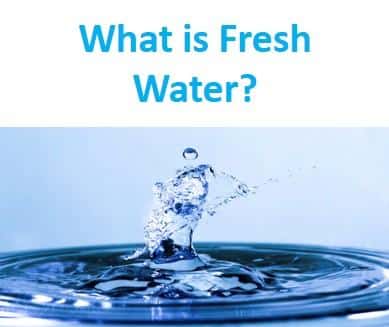The three states of matter are solids, liquids, and gases. Particles in solids are tightly packed together. The particles move faster in liquids, while they spread out more in gases. In chemistry, particles can be atoms, ions, or molecules.
The molecules in liquids can move around and slide past one another. For instance, Water is a simple example. You have solid water if you have a block of ice. When you add heat (a type of energy), the ice melts into liquid water that you can drink (it has reached its melting point). If you continue to heat the water, it will evaporate and turn into steam, which is water in a gaseous state (it has reached boiling point).
A liquid will take on the shape of the container in which it is contained. A liquid can be compressed more easily than a solid.
Table of Contents
Definition of Liquid
A liquid is defined as a form of matter with a fixed volume but no fixed shape. It is made up of atoms or molecules that are loosely connected by intermolecular bonds. . The atoms or molecules in a solid, on the other hand, are fixed in a rigid shape, whereas the particles in a gas are separated by large distances.
Some important characteristics of liquid are listed below:
- A liquid’s weight can be determined by weighing it.
- Liquids, like solids, occupy space as a form of matter.
- Liquids lack a fixed shape but do have a fixed volume. This means that when placed in a container, they spread out to fill it, but they keep their own volume together.
- Because there isn’t much space between the atoms, liquids can’t be easily compressed into a smaller space.
Daily Life Examples of Liquids
What is the matter?
The matter is everything around you that you can see, feel, or touch. It includes things like the air we breathe and the everyday items we use. Everything that exists as a form of matter can be weighed to determine how much matter is in it. That’s how big they are! We can also quantify how much space they occupy by measuring their volume.
Examples of Liquid State of Matter
- Water: Water is the most common example of a liquid. It is used for various purposes, including drinking, washing, cooking, and irrigation.
- Milk: Milk is a liquid that is commonly used for drinking, making dairy products, and cooking.
- Cooking oils: Cooking oils, such as olive oil, vegetable oil, and canola oil, are liquids that are used for frying, baking, and cooking.
- Beverages: Many beverages, such as juices, soft drinks, tea, and coffee, are liquids that are commonly consumed.
- Ink: Ink is a liquid that is used for writing and printing.
- Paint: Paint is a liquid that is used for painting surfaces, such as walls, furniture, and artwork.
- Cleaning solutions: Many cleaning solutions, such as bleach, ammonia, and vinegar, are liquids that are used for cleaning surfaces and removing stains.
- Perfume: Perfume is a liquid that is used for scenting the body or clothing.
- Liquid nitrogen: Liquid nitrogen is a liquid that is used in cryogenics, as a coolant in computer systems, and for preserving biological samples.
- Mercury: Mercury is a liquid metal that is used in thermometers, barometers, and other scientific instruments.
Frequently Asked Questions
- What is the difference between a solid and a liquid?
Answer: The main difference between a solid and a liquid is that a solid has a fixed shape and volume, while a liquid has a fixed volume but takes the shape of its container.
- What is the boiling point of a liquid, and how does it relate to its vapour pressure?
Answer: The boiling point of a liquid is the temperature at which its vapour pressure is equal to the pressure of the atmosphere above it. As the temperature of liquid increases, its vapour pressure also increases, until it reaches the point where it is equal to the atmospheric pressure and the liquid boils.
- How does the intermolecular force between molecules affect the properties of a liquid?
Answer: The intermolecular force between molecules affects the properties of a liquid, such as its boiling point, viscosity, and surface tension. Liquids with stronger intermolecular forces tend to have higher boiling points, greater viscosity, and higher surface tension than liquids with weaker intermolecular forces.
- What is surface tension, and how does it relate to the intermolecular forces in a liquid?
Answer: Surface tension is the force that causes the surface of a liquid to contract and form a shape that minimizes its surface area. It is related to the intermolecular forces in a liquid, as liquids with stronger intermolecular forces tend to have higher surface tension.
- What is viscosity, and how does it relate to the temperature and intermolecular forces in a liquid?
Answer: Viscosity is a measure of a liquid’s resistance to flow. It is related to both the temperature and intermolecular forces in a liquid, as liquids with higher intermolecular forces tend to have higher viscosity while increasing temperature decreases viscosity.
More Interesting Links
Combustion Reactions| Introduction, Reaction, & Facts
SO2 Polar or Nonpolar
Is HCl Polar or Nonpolar?
Conduction in Physics| Easy Examples
How Many Cups in a Gallon? Cups to Pints, Quarts, and More
The Concept of Proportionality
- BCl3 Lewis Structure in four simple steps - November 1, 2023
- PH3 Lewis Structure in four simple steps - October 8, 2023
- PF3 Lewis structure in four simple steps - September 24, 2023



